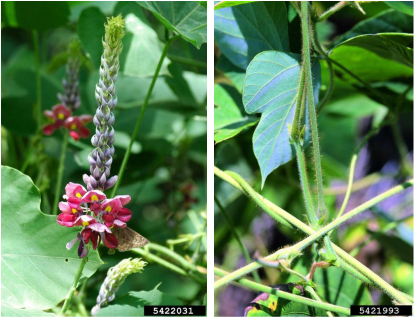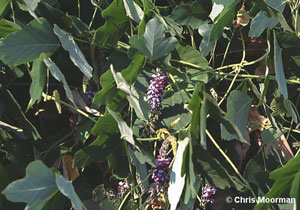KudzuPueraria montana
The infamous kudzu was introduced as an ornamental plant in the 19th century and its use expanded during the 1930s when farmers were encouraged to use it to manage erosion. Within 20 years it has invaded southeastern ecosystems. It kills other plants by growing over them – at an extremely rapid rate (1’ in a day!). It is found in open habitats throughout North Carolina; it does best in fields, disturbed forests, forest edges, and roadsides. It spreads through runners and rhizomes. Kudzu is a woody vine that can grow up 100’. Its compound leaves are made up of 3 leaflets (4” wide); sometimes these are round coming to a point; some are lobed (2-3 lobes per leaf); they grow alternately along the stem. Stems are hairy when young but become woody as they mature (diameter can be up to 4”). Flowers (0.5 – 0.75”) are purple and fragrant and grow in hanging spikes; they bloom in late summer on sun-exposed plants. During the fall, the vine produces flat, brown seedpods. Fact Sheet: Kudzu |
Photo credit (for both): James H. Miller, USDA Forest Service, Bugwood.org
Photo Credit: Chris Moorman
|


